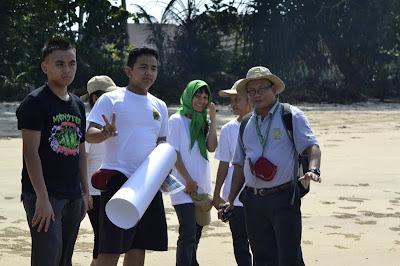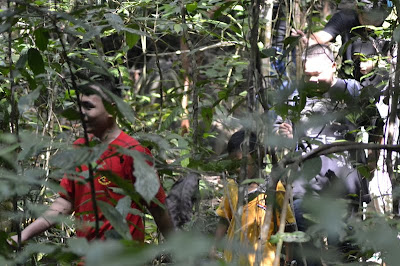Junior Wildlife Ranger programme launched
Posted on October 3, 2010, Sunday
Borneo Post Online
KUCHING: Sarawak Forestry Corporation (SFC) launched its Junior Wildlife Ranger (JWR) programme yesterday to further enhance the younger generation’s interest in, and awareness of, environmental conservation.
Kids aged 10 to 18 can become junior wildlife rangers once they have completed all the modules in the two-year programme.
SFC general manager Wilfred Landong said presently the programme was open only to children of SFC personnel. It could be open to children of non-staff possibly next year.
He also hoped that in the long term the programme could expand and generate as much interest as other movements such as scouts and the Malaysian Red Crescent.
“For now, we will study the pilot intake by experimenting with the children of our own personnel. Once it is more organised, we will open it to the public. Maybe in a year’s time,” he said yesterday while officiating at a family day of SFC’s recreation club (Saforec) at MBKS Indoor Stadium, Pending here.
Wilfred, who is also chief wildlife warden, said the registration for the programme would be free of charge. He pointed out the main objective was not to make profit but to promote environmental consciousness, build interest in flora and fauna conservation.
He went on to say that this could be the first step forward for the JWRs who are interested in the prospect of having a career with the corporation in the future.
“It is a voluntary project where one of the objectives is to expand the programmes to schools throughout the state. It would be a good avenue. We are hoping that when the JWR programme is open to public participation in the future, it would be well received and supported. It is very important for this generation to be inculcated with such consciousness as they are the ones who will be carry out and implement conservation plans,” he said.
The programme has 10 modules – Flora, Fauna, Ecosystem, Recycling, Hydrology, Geology, Weather, Climate, Rules and Regulations of Protected Species and Totally Protected Species including careers in Forestry. The modules have to be completed within two years before the juniors can become qualified wildlife rangers.
“The important thing is the knowledge and experience gained. Who knows, some of them might develop enough interest to continue and work with the Forest Department. After 18, they would get to enter the honorary wildlife ranger programme which is only by gazetted appointments. The pilot JWR project saw 59 youths registered for the programme. Seeing it as a significant contribution and commitment of the parents,” Wilfred hoped that more would follow suit including members of the public in the future.
“The department cannot do this alone. When it comes to conservation of wildlife and the protection of the environment, public participation is needed. Everybody has a role to play in protecting our earth,” he said.
Saforec’s family day yesterday attracted about 450 staff members and their families.
A colouring contest for children, aerobics, an interactive line dance competition, and telematches for all participants were among the activities during the family day.


























